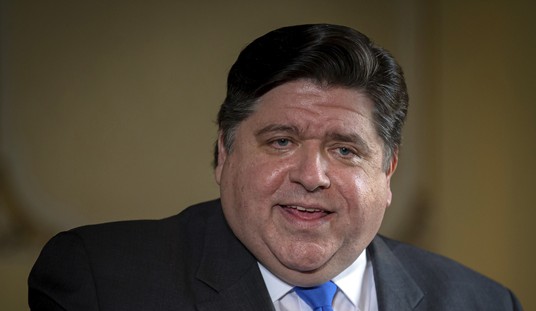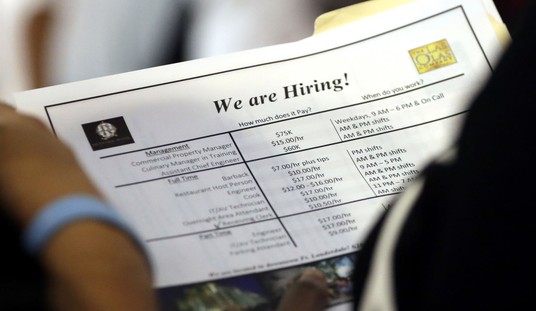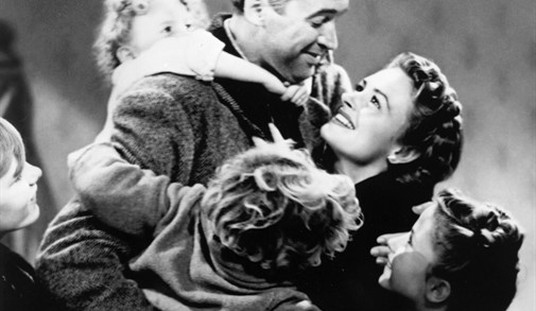The end of summer is around the corner, and students are beginning to return to college campuses across the country. That means buying textbooks, rearranging class schedules, Saturday tailgate parties, and a host of academic and extracurricular activities.
One national student group gearing up for the upcoming academic year is the Muslim Student Association (MSA). Founded in 1963 at the University of Illinois, Urbana-Champaign, and operated as an arm of the Saudi-funded, Muslim Brotherhood-controlled Muslim World League, the MSA is one of the oldest, largest, and most respected Islamic institutions in the country. They have chapters at more than 100 universities and colleges.
But despite its apparent respectability and polished public presentation, the MSA has a dark side.
Since its inception, the MSA has chronically been a vehicle of extremism, hatred, and incitement to violence. Its chapters host a wide variety of extremist speakers and have repeatedly raised funds for Islamic groups that have later been closed by the U.S. government for funding terrorism. For this reason, the MSA was identified in 2004 as one of 27 Islamic charities and groups in the U.S. under investigation by the Senate Finance Committee for terrorist support.
As a result of the long-time institutional extremism, the MSAs have also proved to be a fertile recruiting ground for terrorist organizations, such that a 2007 report on Islamic radicalization published by the New York City Police Department identified the MSA as one of the key “radicalization incubators” for homegrown terrorists (p. 68). This dubious distinction is not without cause.
One of the darkest secrets of the MSA, certainly never advertised by the organization or mentioned in their publications, is a rather lengthy list of top MSA leaders who have been arrested and convicted on a wide array of terrorism charges, ranging from material support of terrorist groups to being actively involved in terrorist plots.
It is important to stress that these are not fringe figures in the MSA organization, but some of its top leaders.
These include an MSA national president who was al-Qaeda’s top financier in the U.S., a chapter president who was one of al-Qaeda’s co-founders, and a former MSA faculty advisor who is currently the terrorist most wanted by the U.S. government. Other MSA leaders have been recently identified in several domestic and international terror plots, and some currently are facing terrorism charges.
The following list is by no means exhaustive:
- Earlier this month a Boston news outlet reported that Tarek Mehanna — currently facing indictment on terrorism material support charges with federal prosecutors alleging that Mehanna and his associates were planning domestic terror attacks — had represented himself as a MSA official in the student publication of the Massachusetts College of Pharmacy and Health Science where he attended. Curiously, the April 2007 issue of the school publication mentioned in the news report has recently been taken offline.
- Last September, Fox News reported that a top official of the al-Qaeda-linked Somali terrorist group al-Shabaab, previously identified in recruitment videos as “Abu Mansoor Al-Amriki,” was in fact 25-year-old American-born Omar Hammami of Daphne, Alabama. Hammami had served as president of the MSA chapter at the University of South Alabama in 2001 and 2002. Speaking to the campus newspaper as MSA president after the 9/11 attacks, he complained of the troubles of living as a Muslim in America and that it was “difficult to believe that a Muslim could have done this.”
- In April 2003, the apartment of Arizona State MSA president Hassan Alrefae and vice president Jaber Al-Thukair was raided by the FBI in a search for weapons as part of a larger investigation into possible terrorist training by foreign student members of the MSA. The group had been under surveillance by the FBI, who videotaped them engaged in weapons training, with all but Alrefae doing so in violation of their student visas that prohibit handling firearms. Alrefae is the son of a high-ranking member of the Saudi Royal Navy.
- Ali Asad Chandia, who was convicted in June 2006 on terror charges as part of the Northern Virginia jihad network, had previously served as president of the Montgomery College (MD) MSA in 1998 and 1999. He was sentenced to 15 years in prison for convictions on three separate counts of conspiracy and material support to the Pakistani Lashkar-e-Taiba terrorist group.
- Abdurahman Alamoudi, who served as MSA national president in 1982 and 1983, is currently serving a 23-year prison sentence for his extensive international terrorist activities. Once the most prominent Muslim political activist in the country, and counselor to U.S. presidents and cabinet officials, the U.S. government now claims that he was one of al-Qaeda’s top fundraisers. A 2005 U.S. Treasury press release said that Alamoudi’s arrest was “a severe blow to al-Qaeda, as Alamoudi had a close relationship with al-Qaeda and had raised money for al-Qaeda in the United States.”
- Aafia Siddiqui was convicted this past February of attempted murder of a U.S. Army captain while she was incarcerated and being interrogated by authorities at a prison in Afghanistan. According to news reports, she had been captured in 2008 with explosives, deadly chemicals, and a list of New York City landmarks. Described as “al-Qaeda’s Mata Hari” and “Lady al-Qaeda,” Siddiqui was active in the MSA at MIT, where she studied neuroscience. A 2005 article in Vogue, which speculated that Siddiqi’s radicalization began with her association with the MSA, noted that Siddiqi had authored a guide published by the national MSA organization that encouraged MSA members not to water down Islamic doctrine — particularly on the topics of jihad and the treatment of women, saying that perseverance was needed until “America becomes a Muslim land.” Siddiqui is scheduled to be sentenced on September 23.
- Former University of Arizona MSA president Wael Hamza Julaidan, who attended the university in the mid-1980s, has the distinction of being one of al-Qaeda’s co-founders and its logistics chief. He also served as the president of the Islamic Center of Tucson in 1983 and 1984. He was listed as a specially designated global terrorist by the U.S. government in September 2002, saying that he is a close associate of Osama bin Laden and other al-Qaeda leaders, and served as director of the Rabita Trust, which had already been designated a terrorist finance entity for its logistical and financial support of al-Qaeda.
- Reporter Paul Barrett detailed the arrest of University of Idaho MSA president Sami Omar Al-Hussayen in a May 2003 Wall Street Journal article. Federal authorities accused him of using his academic studies as a cover for terrorist support activities. Hussayen operated nearly a dozen Arabic language websites for clerics that thundered anti-American themes and encouraged suicide bombings. One website opened by Hussayen a year to the day before the 9/11 attacks carried an article encouraging the use of an airplane to attack Western targets. At the university, he had also covertly relocated his campus office without his advisor’s approval from the computer science department to the engineering lab that handled radioactive materials. Despite being acquitted on terrorism charges, and a mistrial on others for immigration violations, he was deported back to Saudi Arabia in June 2004 after a deal with federal prosecutors.
- Just last December, Howard University dental student Ramy Zamzam and four other D.C.-area men were arrested in Pakistan and charged with plotting to join the Jaish-e-Muhammed terrorist group with plans to attack U.S. soldiers in Afghanistan. The five were active in the MSA, but Zamzam served as the president of the MSA’s D.C. Council. They were convicted in a Pakistani court in June and each will serve at least 10 years in prison there. Authorities were notified they were missing by their parents after a disturbing farewell video was discovered after their disappearance.
- Syed Maaz Shah was arrested on his way to final exams at the University of Texas-Dallas in December 2006, for his involvement with three other students from Houston who were conducting paramilitary training at an Islamic campground and intended to join the Taliban to fight U.S. troops. Following his arrest, the school newspaper identified Shah as secretary of the UTD MSA and a student government senator, despite being in the country on an expired student visa. An investigation by the Dallas CBS affiliate found that Shah had posted comments on the UTD MSA’s website praising insurgents killing troops in Iraq and posting links to terrorist videos. When questioned by the reporter, MSA president Ahmed Subhani refused to answer questions on camera on advice from Shah’s attorney, but the MSA’s entire online forum was pulled down immediately afterward. Shah was convicted on weapons charges in May 2007.
- Al-Qaeda’s chief procurement agent in the U.S. during the 1990s, Ziyad Khaleel, was also the president of the Columbia College (MO) MSA. A computer science student, he also registered and operated the English-language website for the Hamas terrorist organization. Khaleel, who also regularly lectured at the University of Missouri MSA as a representative of the Islamic Association for Palestine (a Hamas front), was tasked by a top al-Qaeda operative in 1996 to purchase a $7,500 satellite phone for Osama bin Laden. Over the next two years he purchased a spare battery for the phone and at least 2000 airtime minutes. The phone, dubbed by intelligence authorities as the “jihad phone,” was used to plan the 1998 U.S. embassy bombings.
- In the early morning hours of March 23, 2003, in Kuwait, as U.S. forces prepared to invade Iraq, US Army Sgt. Hasan Akbar of the 101st Airborne launched a fratricidal attack on his fellow troops, killing an Army captain and an Air Force major with gunfire and fragmentary grenades. Prior to entering the Army, Akbar had obtained aeronautical and mechanical engineering degrees at the University of California-Davis. As reported a few weeks later, during his seven years of study, Akbar spent considerable time at the Davis Islamic Center, the headquarters of the UC-Davis MSA. Akbar was found guilty of murder in a court martial in April 2005, and is awaiting execution.
- For U.S. authorities, the most wanted terrorist is al-Qaeda cleric Anwar Al-Aulaqi, who reportedly played a roll in the Ft. Hood massacre, the failed Christmas Day underwear bomber plot, and the recent attempted Times Square bombing. Before fleeing the U.S. for Yemen in 2002, Aulaqi served as the chaplain for the George Washington University MSA. He was elected to that position by the group’s membership. But no sooner had Aulaqi’s ties to three of the 9/11 hijackers been revealed then the GWU MSA began to distance itself from the terror cleric, claiming he had attended only one group meeting and played no active role despite being the organization’s spiritual leader.
It would certainly be grossly unfair to tar the tens of thousands of MSA members across the country as terrorist supporters or would-be terrorists solely for their participation in the organization and the actions of these MSA leaders. Despite the historic extremism of the group’s national leadership, some chapters have been outspoken in their demand for a moderate, non-violent form of Islam. But even some MSA members have complained of the authoritarian structure, manipulation of elections, and religious extremism that permeate many MSA chapters.
But what is clear is that the MSA has a serious problem, despite any protestations of moderation to the contrary. The group’s designation by counterterrorism authorities as a “radicalization incubator” is apt as witnessed by this shocking list of a baker’s dozen of top MSA leaders involved in all manner of terror plots and activity. Again, these aren’t marginal figures, but the MSA’s cream of the crop leadership on the local, regional, and national level stretching back more than a quarter-century. Considering such a horrible historical track record, as students return for a new school year perhaps other terrorist plots are stewing in the MSA terror incubator.









Join the conversation as a VIP Member